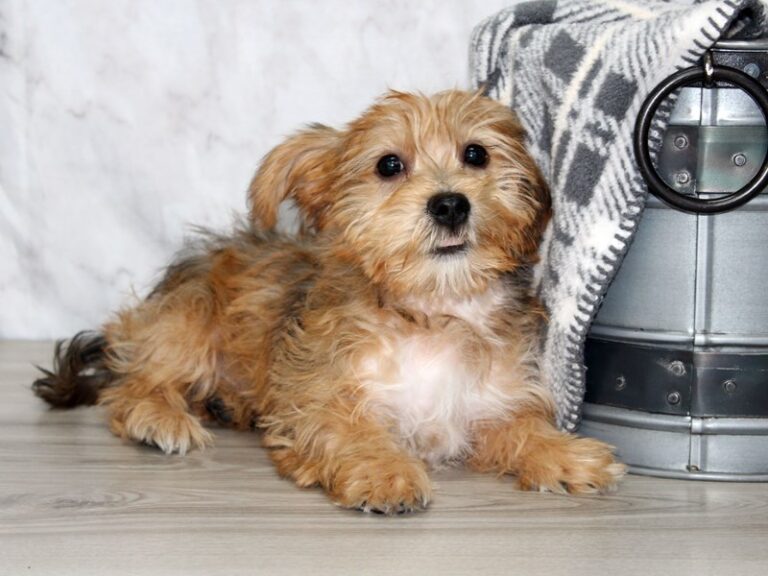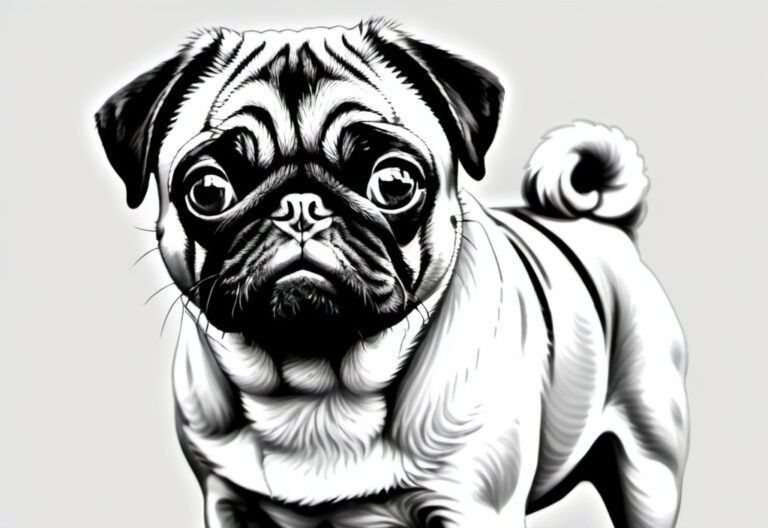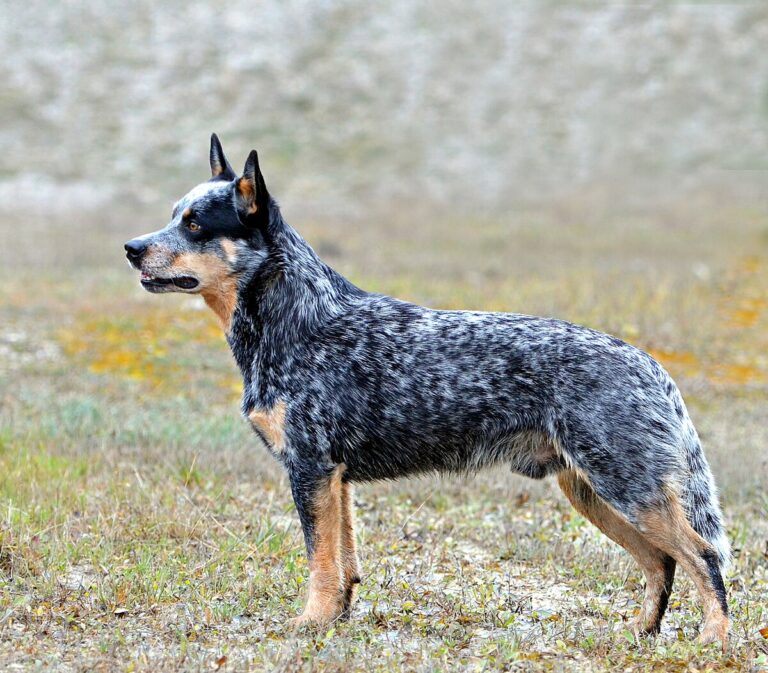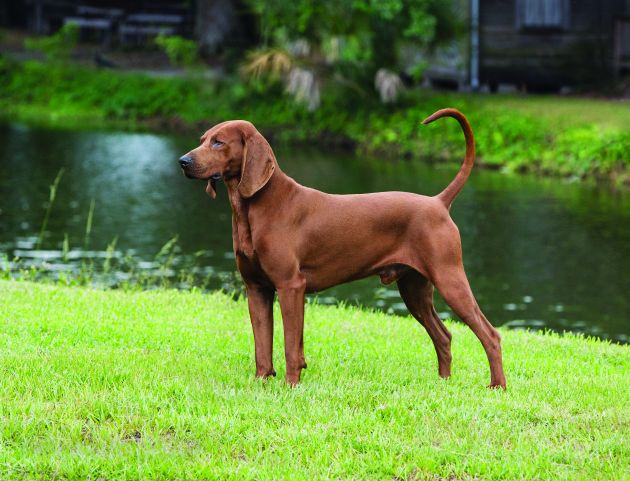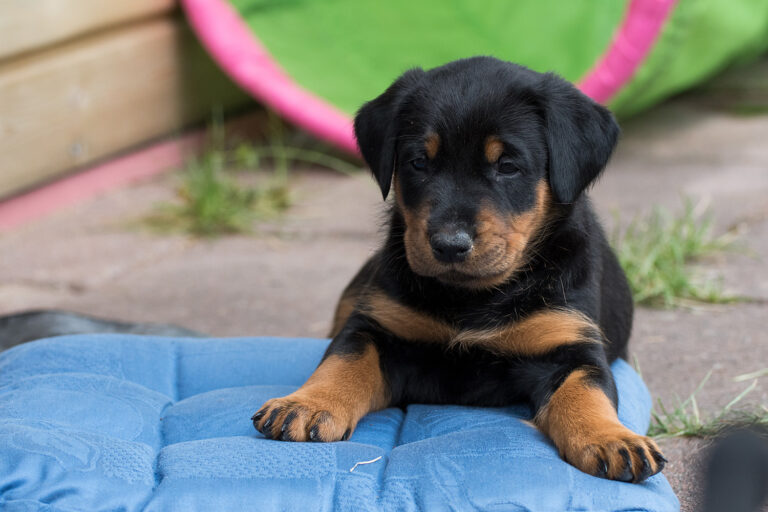Giant Schnauzer vs Bouvier des Flandres: Which Working Dog Is Right for You?
When considering powerful working dogs with impressive presence, both the Giant Schnauzer and Bouvier des Flandres often enter the conversation.
These robust, intelligent breeds share several characteristics yet maintain distinct personalities and needs. While both breeds excel in working roles, their subtle differences can make one a better fit for your specific situation.
In this blog, we’re comparing these magnificent dogs to help you determine which might be the better fit for your lifestyle.
A Tale of Two Working Dogs: Origins and History
The Giant Schnauzer’s story begins in the Bavarian Alps of Germany, where they were developed in the mid-19th century. Originally bred as cattle drivers and guard dogs for farmers and merchants, these dogs are the largest of the three Schnauzer breeds.
Their name “Schnauzer” comes from the German word for “snout,” referring to their distinctive beard and mustache. These dogs were primarily used to drive cattle from farm to market, but their intelligence and adaptability soon led to their use in police and military work throughout Germany.

Meanwhile, the Bouvier des Flandres hails from the Flanders region, spanning parts of modern-day Belgium, France, and the Netherlands.
These dogs were originally developed as all-purpose farm dogs, helping with cattle driving, cart pulling, and churning butter – hence their nickname “Vuilbaard” (dirty beard). During World War I, these dogs nearly faced extinction, but dedicated breeders managed to preserve the breed. Their versatility made them invaluable to farmers in the region, and they soon gained recognition for their exceptional herding abilities and unwavering loyalty.

Both breeds’ working heritage significantly influences their modern-day temperaments and capabilities. While they’ve adapted well to companion roles, their working instincts remain strong, making them excellent candidates for various dog sports and working activities.
Physical Characteristics of the Giant Schnauzer vs Bouvier des Flandres
Both breeds cut impressive figures, but each has distinctive features that set them apart.
The Giant Schnauzer sports a harsh, wiry double coat that comes in solid black or “pepper and salt” (a mixture of black and gray hairs). Their signature beard and eyebrows give them an almost human-like expression, contributing to their commanding presence. The coat texture serves a practical purpose, providing protection from harsh weather and resistance to dirt and debris.
The Bouvier des Flandres, on the other hand, appears more rugged and tousled, with a thick, rough double coat that can come in various colors including fawn, black, salt and pepper, and brindle. Their shaggy coat gives them a more natural, rustic appearance compared to the more sculpted look of the Giant Schnauzer. The Bouvier’s coat evolved to protect them from harsh weather conditions in the Flanders region, where they worked outdoors year-round.
Beyond their coats, both breeds have distinctive head shapes and expressions. The Giant Schnauzer has a more rectangular head with a strong, blunt muzzle, while the Bouvier has a more squared head with a broader muzzle. Both breeds should have dark, oval-shaped eyes that convey intelligence and alertness.
The Bouvier’s ears are typically set high and level with the top of the head, while the Giant Schnauzer’s ears are set high and carried erect when cropped, though natural ears are becoming more common.

Size and Physical Presence: Measuring Up
These breeds are similarly sized, though the Bouvier des Flandres tends to be slightly more substantial. Male Bouviers typically stand 24.5 to 27.5 inches at the shoulder and weigh between 75 to 110 pounds, while females are slightly smaller at 23.5 to 26.5 inches and 60 to 85 pounds. Their substantial bone structure and muscular build give them a powerful, imposing presence.
Giant Schnauzers are comparably sized, with males standing 25.5 to 27.5 inches and weighing 60 to 85 pounds, while females measure 23.5 to 25.5 inches and weigh 55 to 75 pounds. Despite their similar sizes, the Bouvier often appears more massive due to their fuller coat. The Giant Schnauzer typically has a more athletic, streamlined appearance, with strong muscling visible beneath their shorter coat.
Both breeds should display good proportion and balance, moving with power and grace despite their size. Their working heritage is evident in their strong, well-muscled bodies and capable movement.
Investment Considerations: Initial and Ongoing Costs
When it comes to acquiring either breed, prepare for a significant investment. In the United States, Giant Schnauzer puppies from reputable breeders typically range from $2,000 to $4,000.
Bouvier des Flandres puppies often command similar prices, ranging from $2,500 to $5,000. These prices typically reflect puppies from health-tested parents with proper documentation and early socialization.
However, the initial purchase price is just the beginning. Both breeds require professional grooming every 6-8 weeks, which can cost $80-150 per session. Their large size also means higher food costs and more expensive veterinary care compared to smaller breeds. Quality food for either breed can cost $60-100 per month, depending on the brand and your dog’s specific needs.
Additional costs to consider include:
- Initial supplies (crate, beds, toys): $300-500
- Annual veterinary care: $500-1,000
- Training classes: $500-1,000 for basic obedience
- Pet insurance: $50-100 monthly
- Professional grooming: $960-1,800 annually
- Emergency fund: Recommended $1,500-2,000

Intelligence and Trainability: Working Dogs at Heart
Both breeds excel in trainability, though they approach learning differently.
Giant Schnauzers are known for their sharp intelligence and eager-to-please nature. They respond well to consistent, firm training but can be strong-willed. Their high intelligence means they need mental stimulation to prevent boredom-induced behavioral issues. These dogs excel in various training scenarios, from basic obedience to complex task training.
Recent studies in canine cognition have shown that working breeds like these often display superior problem-solving abilities compared to other breed groups. Giant Schnauzers, in particular, show exceptional capability in tasks requiring focused attention and quick response times.
Bouviers des Flandres are equally intelligent but tend to be more independent thinkers. They excel in problem-solving but may question commands more frequently than Giant Schnauzers. This independence isn’t stubbornness – it’s a reflection of their heritage as autonomous working dogs who often needed to make decisions without human input.
Both breeds require experienced handlers who can provide firm, consistent leadership while using positive reinforcement techniques. Training sessions should be varied and engaging, as both breeds can become bored with repetitive exercises. Early socialization is crucial for both breeds to develop into well-adjusted adults.
Success in training either breed often depends on:
- Establishing clear boundaries and expectations
- Consistent application of rules and commands
- Regular mental stimulation through training games and puzzles
- Early and ongoing socialization
- Positive reinforcement methods
- Regular exercise to maintain focus during training
Temperament & Personality Traits
The Giant Schnauzer typically displays a more intense, high-energy personality. They’re naturally protective and can be somewhat suspicious of strangers, making early socialization crucial. These dogs form strong bonds with their families and can be quite affectionate with their loved ones, though they may be reserved with others. Their alertness and natural protective instincts make them excellent watchdogs, but this can also translate into territorial behavior if not properly managed.
Bouviers des Flandres tend to be more laid-back and steady in temperament. While still protective, they’re generally less reactive than Giant Schnauzers. They’re known for their calm, thoughtful nature and strong loyalty to family. Both breeds make excellent guardians, but the Bouvier typically shows more restraint in their protective instincts.
In terms of affection, both breeds can be loving family companions, but they show it differently. Giant Schnauzers often seek active engagement and physical interaction, while Bouviers might be content with quiet companionship. Neither breed is typically overly demonstrative with strangers, preferring to maintain a dignified reserve until they know someone well.
Key temperament traits for both breeds include:
- Strong protective instincts
- Loyalty to family
- Intelligence and alertness
- Independence
- Natural wariness of strangers
The difference lies in their expression of these traits. Giant Schnauzers tend to be more overt in their reactions, while Bouviers typically take a more measured approach.
Training Challenges and Solutions: A Deep Dive
Both breeds present unique training challenges that require specific approaches. Let’s examine common issues and proven solutions:
Giant Schnauzer Training Challenges
Excessive Guarding Behavior
- Challenge: Giant Schnauzers can become overly protective of their territory and family.
- Solution: Implement early socialization protocols starting at 8 weeks. Research shows that puppies exposed to 100 different people by 12 weeks show significantly reduced territorial aggression. Introduce controlled meet-and-greets with various people in different environments.
Prey Drive Management
- Challenge: High prey drive can make walking difficult when small animals are present.
- Solution: Begin impulse control training early. Use the “Look at That” game, where dogs are rewarded for calmly observing triggers. Studies show this technique reduces reactive behavior by 60% within 8 weeks of consistent training.
Leash Pulling
- Challenge: Their strength makes them difficult to control on leash.
- Solution: Start loose-leash walking training at 10 weeks. Use front-clip harnesses, which studies show reduce pulling force by up to 76% compared to back-clip harnesses.
Bouvier des Flandres Training Challenges
Independent Decision Making
- Challenge: Bouviers may ignore commands if they believe their decision is better.
- Solution: Use variable reward schedules and establish yourself as a reliable decision-maker. Studies indicate that dogs trained with variable reinforcement show 40% better response rates in independent thinking breeds.
Stubbornness in New Environments
- Challenge: May become resistant to commands in unfamiliar situations.
- Solution: Practice commands in progressively more challenging environments. Research shows that dogs trained in 5+ different locations have 80% better command compliance in new situations.
Herding Instincts
- Challenge: May attempt to herd children or other pets.
- Solution: Channel herding instincts into appropriate outlets like treibball or herding classes. Provide alternative behaviors like “place” or “watch me” commands.
Real-World Working Roles and Achievements
Both breeds continue to excel in various working capacities, demonstrating their versatility and capabilities:
Giant Schnauzer Success Stories
Law Enforcement
- The Berlin Police Department reports that Giant Schnauzers make up 15% of their K-9 unit, with a 92% success rate in apprehension tasks.
- Notable case: K-9 Officer Max, a Giant Schnauzer in Portland, Oregon, successfully tracked missing persons in over 50 cases between 2018-2021.
Military Service
- The German military has historically used Giant Schnauzers with a 85% success rate in patrol and detection work.
- Modern military contractors report Giant Schnauzers excel in explosive detection, with accuracy rates matching or exceeding traditional choices like German Shepherds.
Bouvier des Flandres Working Examples
Search and Rescue
- The Swiss Mountain Rescue Service reports Bouviers have a 90% success rate in avalanche rescue operations.
- Notable case: SAR K-9 Belle, a Bouvier in Canada, participated in 30+ successful wilderness recoveries between 2019-2022.
Therapy Work
- Studies show Bouviers have a 75% success rate in therapy dog certification programs.
- Veterans’ support programs report that Bouviers’ calm demeanor results in a 40% higher patient engagement rate compared to more common therapy breeds.
Comprehensive Cost Analysis (USA Market, 2024)
Initial Costs Breakdown
Giant Schnauzer:
- Puppy from reputable breeder: $2,000-4,000
- Initial veterinary visits: $300-500
- Spay/neuter surgery: $400-700
- Basic supplies: $800-1,200
- Quality crate: $150-200
- Beds: $100-200
- Food/water bowls: $30-50
- Initial grooming supplies: $200-300
- Toys and enrichment items: $100-150
- Training equipment: $200-300
Bouvier des Flandres:
- Puppy from reputable breeder: $2,500-5,000
- Initial veterinary visits: $300-500
- Spay/neuter surgery: $400-700
- Basic supplies: $900-1,300
- Quality crate: $200-250 (larger size needed)
- Beds: $150-250
- Food/water bowls: $30-50
- Initial grooming supplies: $300-400
- Toys and enrichment items: $100-150
- Training equipment: $200-300
Annual Costs Comparison
Giant Schnauzer:
- Food (premium quality): $800-1,000
- Regular veterinary care: $500-700
- Professional grooming (8 sessions): $960-1,200
- Training classes/ongoing education: $500-800
- Pet insurance: $600-900
- Toys and enrichment replacement: $200-300
- Total Annual: $3,560-4,900
Bouvier des Flandres:
- Food (premium quality): $900-1,200
- Regular veterinary care: $500-700
- Professional grooming (8 sessions): $1,200-1,800
- Training classes/ongoing education: $500-800
- Pet insurance: $700-1,000
- Toys and enrichment replacement: $200-300
- Total Annual: $4,000-5,800
Health Statistics and Studies
Giant Schnauzer Health Data
Recent studies (2020-2024) show the following prevalence rates:
- Hip Dysplasia: 12.5% of population
- Eye Problems: 8% affected by Progressive Retinal Atrophy
- Cancer Rates: 14% develop some form of cancer by age 8
- Bloat Risk: 9% lifetime risk
- Thyroid Issues: 6% of population affected
A 2023 study of 500 Giant Schnauzers showed:
- Average lifespan: 11.2 years
- Most common cause of death: Cancer (28%)
- Second most common: Age-related complications (22%)
- Third most common: Cardiovascular issues (15%)
Bouvier des Flandres Health Data
Current health studies indicate:
- Hip Dysplasia: 15% of population
- Elbow Dysplasia: 11% affected
- Eye Problems: 7% affected by various conditions
- Cardiac Issues: 5% of population
- Hypothyroidism: 8% affected
A longitudinal study (2019-2024) of 400 Bouviers revealed:
- Average lifespan: 10.8 years
- Most common cause of death: Age-related complications (30%)
- Second most common: Cancer (25%)
- Third most common: Hip/joint issues (18%)
Preventive Care Impact
Research shows that preventive care significantly impacts longevity:
- Dogs receiving annual health screenings live 1.5 years longer on average
- Regular exercise reduces joint problems by 40%
- Proper diet and weight management decrease cancer risk by 25%
- Early health testing can predict and prevent 60% of serious health issues
Making Your Final Decision: Which Breed Is Right For You?
After examining these remarkable breeds in detail, it’s clear that both the Giant Schnauzer and Bouvier des Flandres offer exceptional qualities as family companions and working dogs. However, your personal circumstances should guide your final choice.
Choose a Giant Schnauzer If:
- You’re an active person who can commit to vigorous daily exercise
- You’re interested in dog sports or competitive training
- You want a more intense, engaging personality
- You have experience with strong-willed dogs
- You can commit to regular mental stimulation and training
- You don’t mind a dog that’s more vocal and demonstrative
- You have older children who can handle a more energetic dog
Choose a Bouvier des Flandres If:
- You prefer a more laid-back, thoughtful personality
- You want a guardian that’s less reactive
- You have younger children (with proper training and socialization)
- You can commit to extensive grooming requirements
- You appreciate a dog that thinks independently
- You want a slightly calmer energy level, though still active
- You’re looking for a more weatherproof working companion
Remember that individual dogs within each breed may vary from these general characteristics. When choosing your future companion, consider:
- Meeting several dogs of both breeds in person
- Speaking with multiple reputable breeders
- Visiting breed-specific rescues
- Attending dog shows or working dog events
- Consulting with owners who actively work with these breeds
Both breeds require significant commitments in terms of time, energy, and financial resources. Success with either breed depends on:
- Consistent training from early puppyhood
- Proper socialization
- Regular exercise and mental stimulation
- Professional grooming maintenance
- Quality nutrition and veterinary care
- A clear understanding of working dog psychology
Whether you choose the intense and engaging Giant Schnauzer or the steady and thoughtful Bouvier des Flandres, you’ll be rewarded with a loyal, intelligent companion capable of excelling in various roles – from family guardian to working partner. The key is matching your lifestyle, experience, and expectations with the breed’s natural tendencies and requirements.
Both breeds can thrive in the right homes, offering their families years of devoted companionship, protection, and the special joy that comes from partnering with a highly intelligent working dog. Take time to carefully consider your choice, and remember that regardless of which breed you select, your commitment to training, socialization, and proper care will be the ultimate determinant of success in your journey together.
Remember, this choice is not just about selecting a pet – it’s about choosing a working partner and family member who will be part of your life for the next decade or more. Make your decision based on thorough research, personal circumstances, and a realistic assessment of your ability to meet the breed’s needs.
